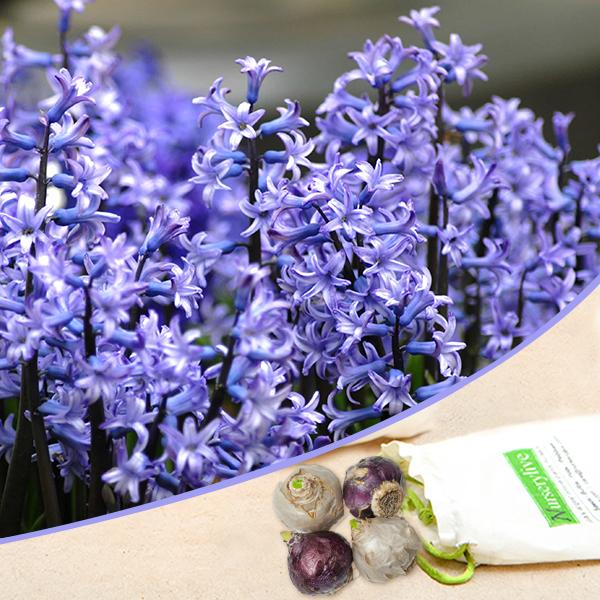
Hyacinth (Blue Multiflora) - Bulbs (set of 5)
(MRP Inclusive of all taxes)
- Shipping ₹79 for entire order
- Dispatch in 7 days
- Country of origin: India

(MRP Inclusive of all taxes)
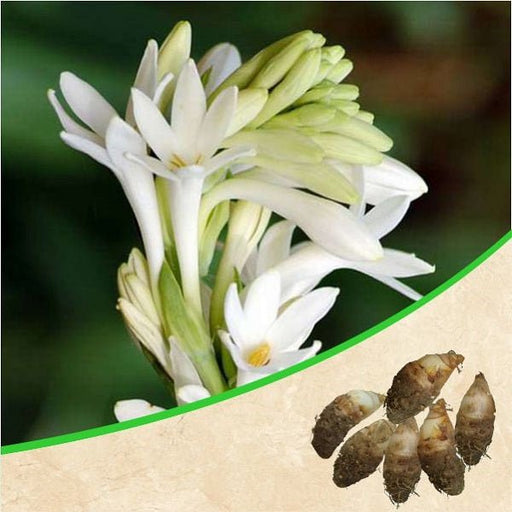
Rajnigandha, Tuberose - Bulbs (Set of 10) Experience the enchanting fragrance of Rajnigandha, also known as Tuberose, with this set of 10 ...
View full details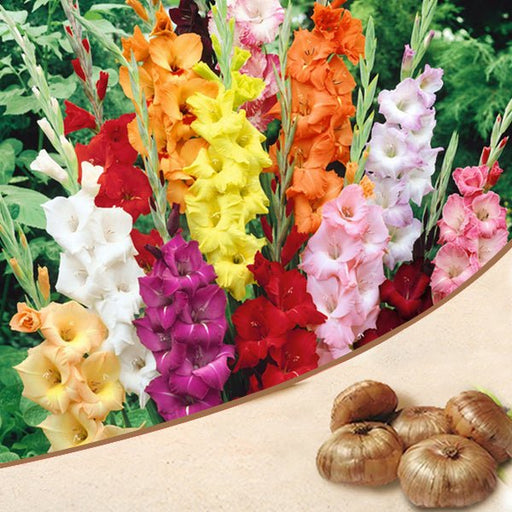 Save 20%
Save 20%
Gladiolus (Random Color) - Bulbs (Set of 10) Transform your garden into a vibrant spectacle with our Gladiolus bulbs, available in a delig...
View full details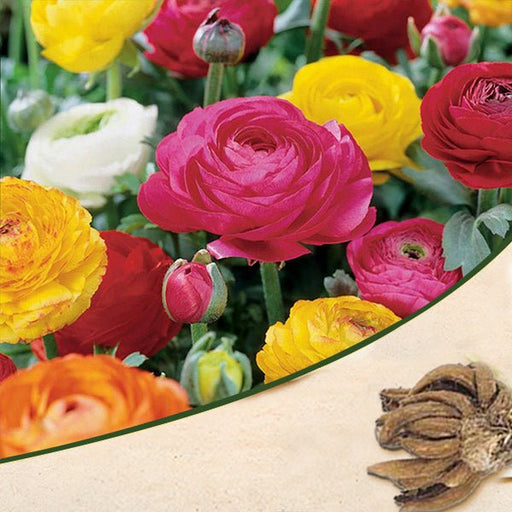 Sold out
Sold out
Ranunculus (Random Color) - Bulbs Transform your garden into a vibrant tapestry of colors with our Ranunculus bulbs. Known for their stunn...
View full details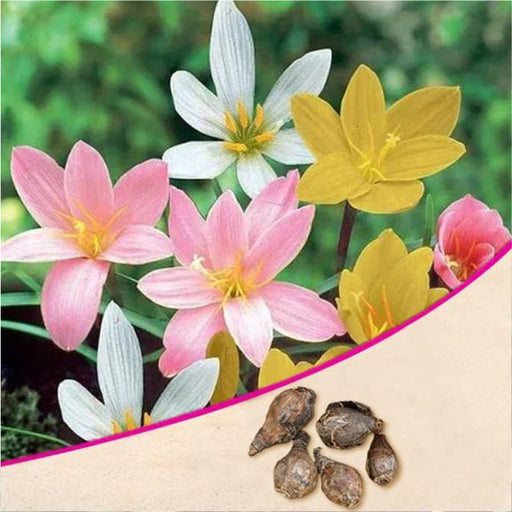
Zephyranthes Lily, Rain Lily (Random Color) - Bulbs (Set of 10) Transform your garden into a vibrant oasis with our Zephyranthes Lily, com...
View full details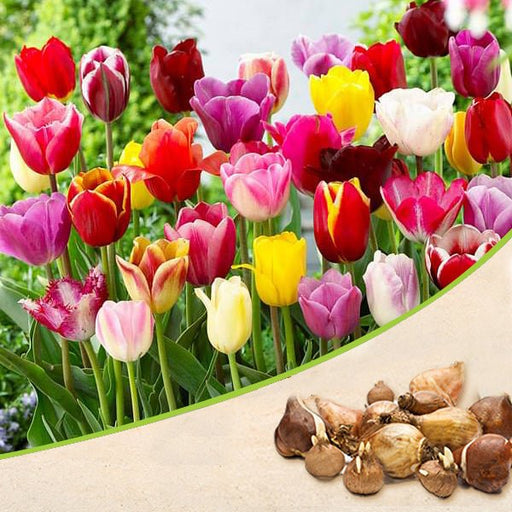 Sold out
Sold out
Tulip (Random Color) - Bulbs Bring a burst of color to your garden with our Tulip (Random Color) bulbs! These vibrant flowers are a spring...
View full details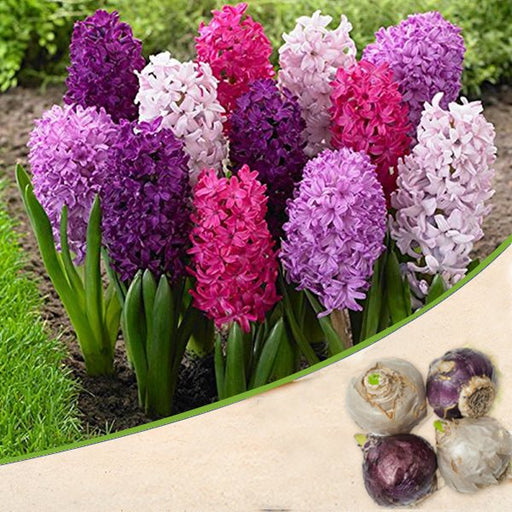 Sold out
Sold out
Hyacinth (Random Color) - Bulbs Transform your garden into a vibrant spectacle with our Hyacinth bulbs, available in a delightful random a...
View full details
Zephyranthes Lily, Rain Lily (Yellow) - Bulbs (Set of 10) The Zephyranthes Lily, commonly known as the Rain Lily, is a stunning addition t...
View full details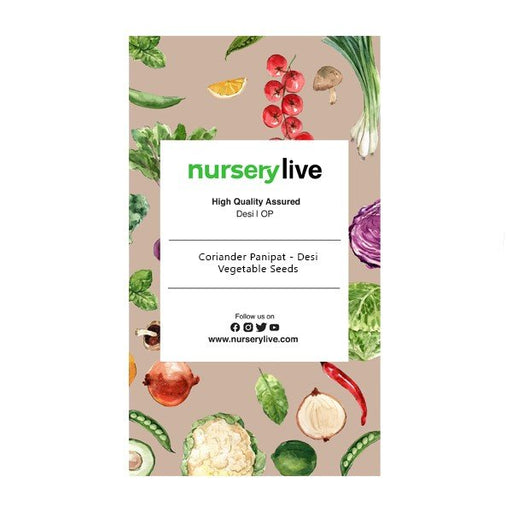
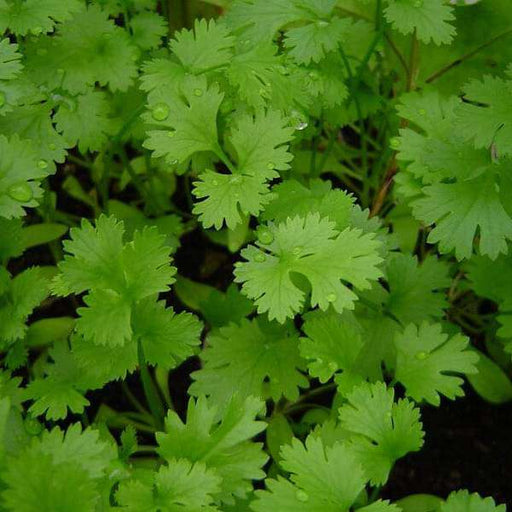 Save 25%
Save 25%
Coriander Panipat - Desi Vegetable Seeds Coriander Panipat is a premium variety of coriander seeds, cherished for its aromatic leaves and ...
View full details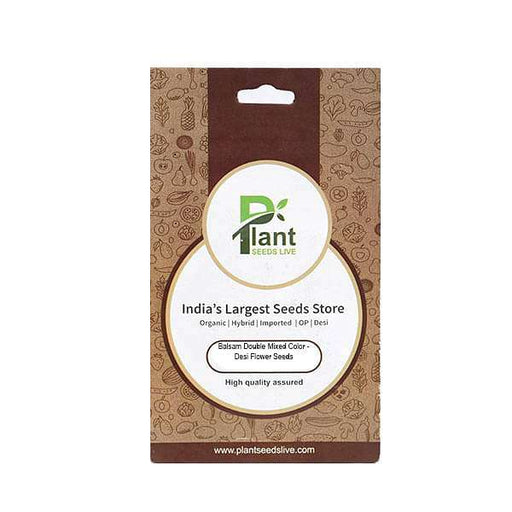
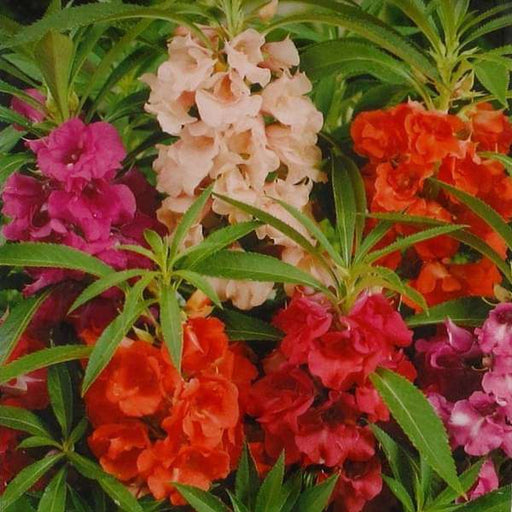 Save 25%
Save 25%
Balsam Double Mixed Color - Desi Flower Seeds Discover the vibrant beauty of Balsam Double Mixed Color - Desi Flower Seeds, a delightful a...
View full details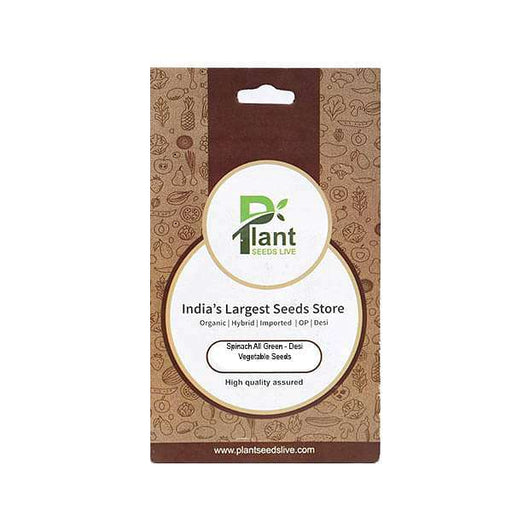
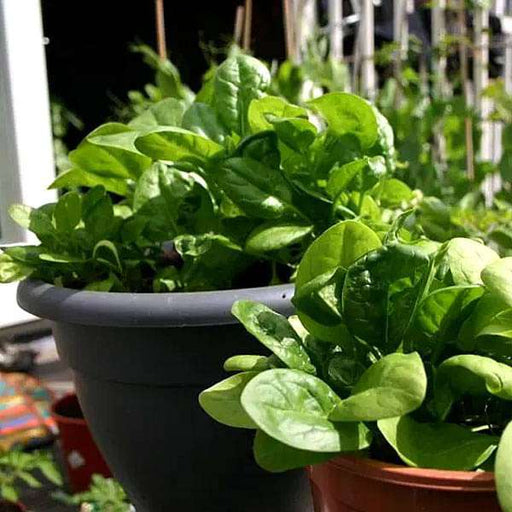 Save 25%
Save 25%
Spinach All Green - Desi Vegetable Seeds Introducing the Spinach All Green - Desi Vegetable Seeds, a premium variety of spinach that thriv...
View full details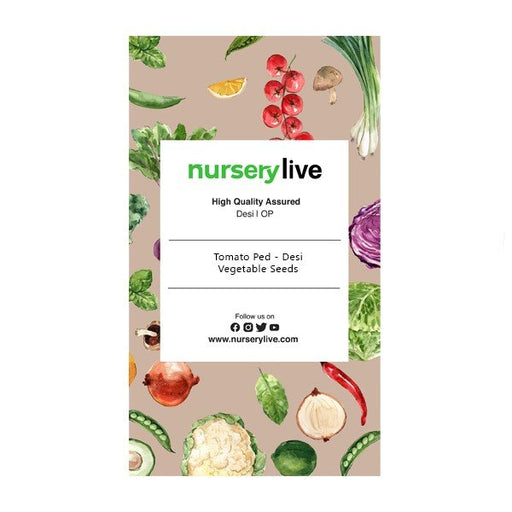
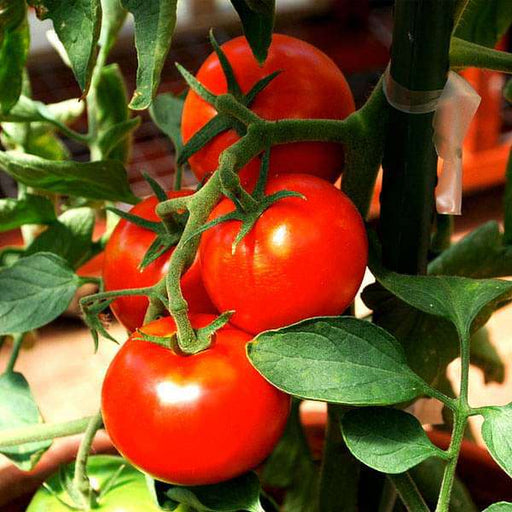 Save 25%
Save 25%
Tomato Ped - Desi Vegetable Seeds Introducing the Tomato Ped - Desi Vegetable Seeds, a premium selection of heirloom tomato seeds that pro...
View full details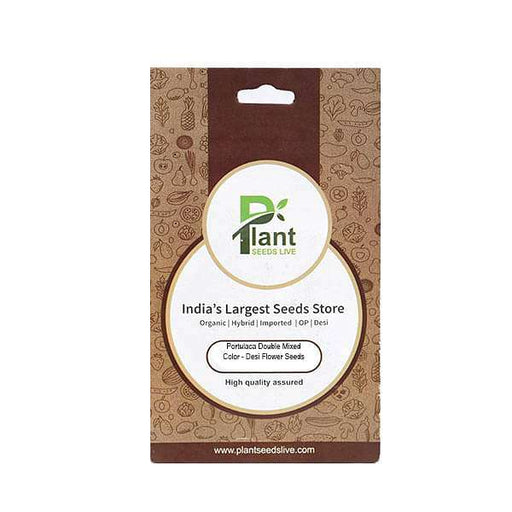
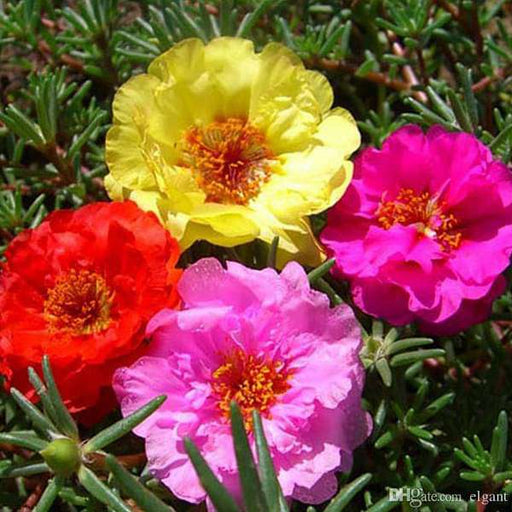 Save 25%
Save 25%
Portulaca Double Mixed Color - Desi Flower Seeds Discover the vibrant beauty of Portulaca Double Mixed Color, a stunning collection of Des...
View full details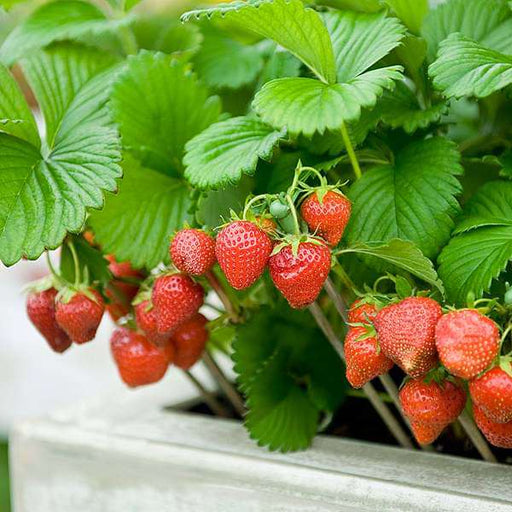 Save 35%
Save 35%
Strawberry - Fruit Seeds Discover the joy of growing your own strawberries with our premium Strawberry Fruit Seeds. Known scientifically a...
View full details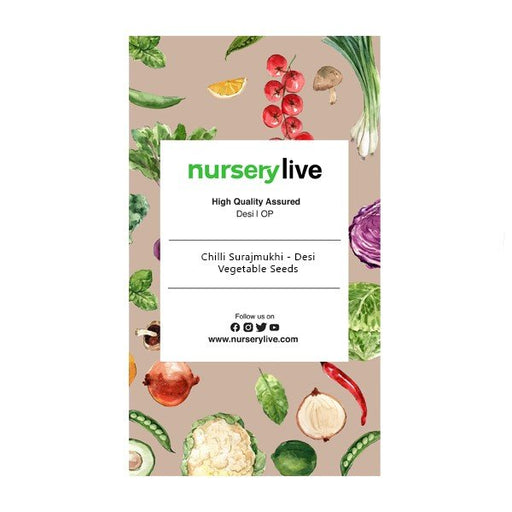
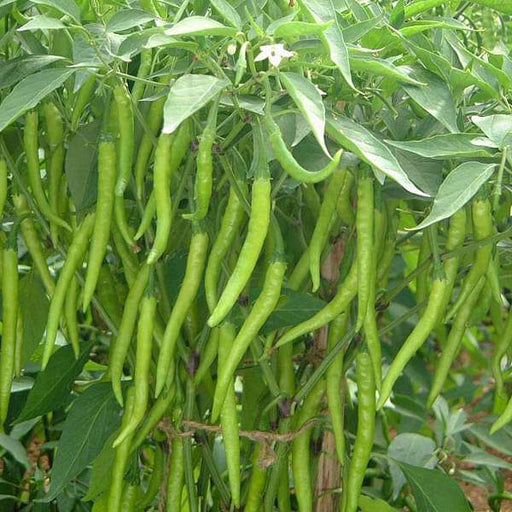 Save 25%
Save 25%
Chilli Surajmukhi - Desi Vegetable Seeds Introducing the Chilli Surajmukhi, a unique variety of desi vegetable seeds that brings a burst o...
View full details
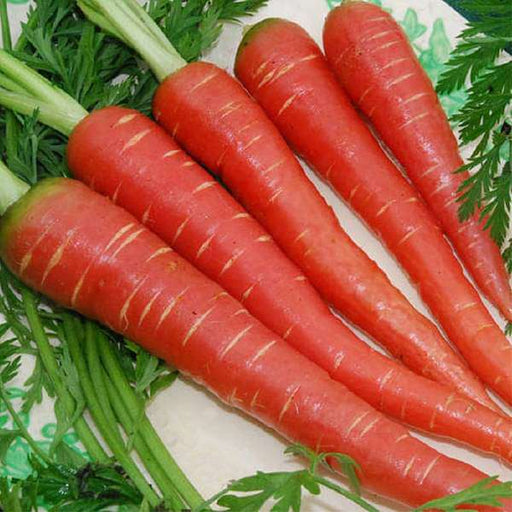 Save 25%
Save 25%
Carrot Red Long - Desi Vegetable Seeds Introducing the Carrot Red Long - Desi Vegetable Seeds, a premium variety known for its vibrant col...
View full details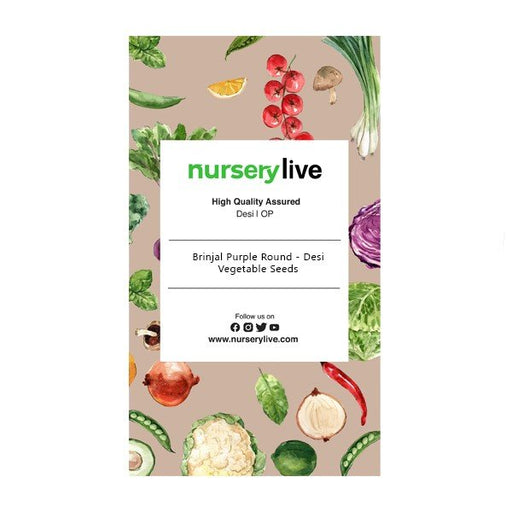
 Save 25%
Save 25%
Brinjal Purple Round - Desi Vegetable Seeds Discover the rich flavors and vibrant colors of Brinjal Purple Round, a staple in Indian cuisi...
View full details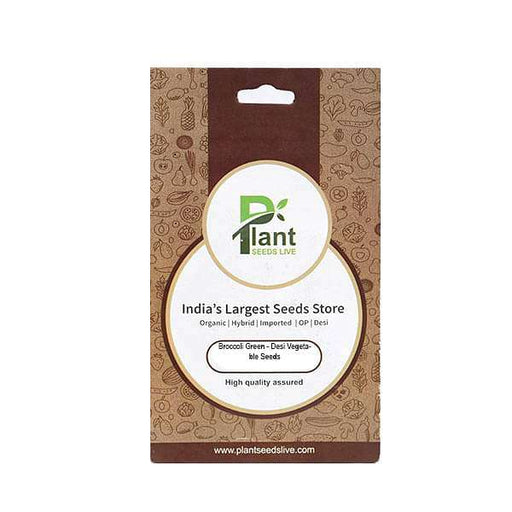
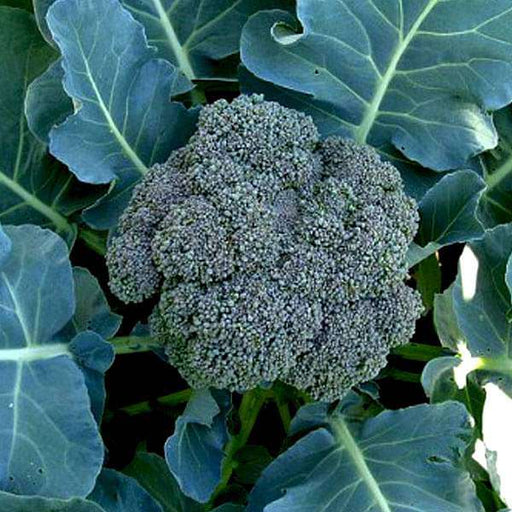 Save 25%
Save 25%
Broccoli Green - Desi Vegetable Seeds Discover the vibrant world of Broccoli Green with our premium Desi Vegetable Seeds. Known for its ri...
View full details
 Save 35%
Save 35%
Best 6 Plants for Perfect Indoor Garden Transform your living space into a lush oasis with our curated collection of the Best 6 Plants for a...
View full details
 Save up to 50%
Save up to 50%
Mini Succulent Garden Pack Transform your space with our Mini Succulent Garden Pack, featuring a delightful collection of 4 any variety beautiful s...
View full details
 Save 30%
Save 30%
5 Best Fragrant Plants Transform your garden or indoor space into a fragrant paradise with our curated selection of the 5 Best Fragrant Plants. Th...
View full details
 Save 24%
Save 24%
Set of 2 Bonsai Looking Grafted Adeniums Transform your indoor or outdoor space with our exquisite Set of 2 Bonsai Looking Grafted Adenium...
View full details Save 45%
Save 45%
Top 4 Die Hard Succulents Pack Transform your indoor or outdoor space with our Top 4 Die Hard Succulents Pack, featuring a curated selecti...
View full details
 Save 30%
Save 30%
5 Best Indoor Plants Pack Transform your living space into a lush oasis with our '5 Best Indoor Plants Pack.' This carefully curated collection fe...
View full details
 Save 25%
Save 25%
Set of 4 Evergreen Air Purifier Plant Pack Transform your indoor space into a lush, green oasis with our Set of 4 Evergreen Air Purifier Pla...
View full details| SrNo | Item Name | Qty |
|---|---|---|
| 1 | Hyacinth (Blue Multiflora) - Bulbs | 5 |
Transform your garden into a vibrant oasis with our Hyacinth (Blue Multiflora) bulbs. Known for their stunning clusters of fragrant blue flowers, these bulbs are perfect for adding a splash of color to any landscape. Each set contains five high-quality bulbs, ensuring a breathtaking display in your garden or pots. Hyacinths are not only visually appealing but also attract pollinators, making them a great addition to eco-friendly gardens.
The Hyacinth (Blue Multiflora) is renowned for its rich, deep blue hue and intoxicating fragrance. This variety is particularly special due to its multiflora nature, producing multiple flower spikes from a single bulb, resulting in a more abundant bloom. Historically, hyacinths have been cherished since ancient times, symbolizing rebirth and spring, making them a perfect choice for seasonal gardens.
These bulbs are not only beautiful but also resilient, thriving in various soil types and conditions. Their ability to naturalize means they can return year after year, providing a reliable source of spring color. Additionally, the Blue Multiflora variety is known for its long-lasting blooms, ensuring your garden remains vibrant for weeks.
By planting Hyacinth bulbs, you contribute to a healthier ecosystem. These flowers provide essential nectar for pollinators, supporting local biodiversity. Additionally, their ability to thrive in various conditions makes them a sustainable choice for gardeners looking to enhance their green spaces.
These little beauties are the rock stars of the bulb world. With their vibrant blue hues, they’re like the blue jeans of your garden—always in style and perfect for any occasion. Plant them in the fall, and watch as they strut their stuff come spring, filling your garden with a fragrance that could make even the grumpiest neighbor smile.
Think of Multiflora Hyacinths as the social butterflies of the bulb family. They produce multiple blooms on each stem, creating a floral fiesta that’s hard to ignore. These charming clusters not only brighten up your garden but also attract pollinators, making your yard the hottest spot in the neighborhood.
Spring is the season of renewal, and nothing says “welcome back” like a garden full of Hyacinths. These bulbs are the heralds of spring, bursting forth with color and fragrance that can make even the most winter-weary soul feel alive again.
If you’re looking to add a little olfactory magic to your garden, Hyacinths are your go-to. Their sweet, heady scent wafts through the air, creating an aromatic experience that’s like a warm hug for your senses. Who needs air fresheners when you have nature’s perfume?
Not a green thumb? No problem! Hyacinths are the low-maintenance divas of the bulb world. Just plant them, water them, and let them do their thing. They’ll reward you with a stunning display that’ll have your friends wondering if you’ve hired a professional gardener.
Want to turn your garden into a vibrant masterpiece? Hyacinths are your ticket to a colorful paradise. Their rich blue tones can be paired with other spring flowers for a dazzling display that’ll make your garden the talk of the town.
Short on space? Hyacinths are perfect for container gardening! These bulbs thrive in pots, allowing you to create a portable garden that can brighten up any balcony or patio. Just imagine the envy of your neighbors as they admire your floral flair.
Hyacinths are not just pretty faces; they’re also pollinator magnets! Bees and butterflies can’t resist their sweet nectar, making your garden a buzzing hotspot. Planting these bulbs is like throwing a party for the local pollinators—everyone’s invited!
The secret to a stunning spring garden lies in fall planting. By tucking your Hyacinth bulbs into the ground before winter, you’re giving them a cozy home to hibernate in. Come spring, they’ll pop up like eager children on Christmas morning, ready to dazzle.
Caring for Hyacinth bulbs is as easy as pie. Just ensure they have well-drained soil and a sunny spot, and they’ll thrive. After blooming, let the foliage die back naturally to store energy for next year’s show. It’s like giving them a spa day!
Hyacinths are the ultimate design element for any garden. Their striking blue color can be used to create focal points or borders, adding depth and interest to your landscape. With these bulbs, your garden will be the envy of all the other yards on the block.
Want to bring a touch of spring indoors? Hyacinths make fabulous seasonal decor. Cut a few blooms and place them in a vase, and you’ll have a centerpiece that’s sure to impress. It’s like bringing a piece of your garden inside, minus the dirt!
Hyacinth (Blue Multiflora) bulbs are delightful little packages of joy that bloom into stunning blue flowers. These bulbs are perfect for adding a splash of color to your garden or indoor space. Just plant them, water them, and watch as they transform into a fragrant spectacle that even the bees will envy!
Planting Hyacinth (Blue Multiflora) bulbs is as easy as pie! Choose a sunny spot, dig a hole about 6 inches deep, and place the bulb with the pointed end up. Cover it with soil, give it a drink, and voilà! You’re on your way to becoming a gardening guru with these beauties.
Hyacinth (Blue Multiflora) bulbs are like the overachievers of the garden world, blooming in early spring. With a little patience, you’ll be rewarded with vibrant blue flowers that will make your neighbors green with envy. Just remember, they don’t like to be rushed—good things come to those who wait!
Watering Hyacinth (Blue Multiflora) bulbs is a delicate dance. They love moisture but despise soggy feet! Water them thoroughly after planting, then keep the soil slightly moist until they bloom. Once they’re up and running, a little sprinkle every week should keep them happy and thriving.
Hyacinth (Blue Multiflora) bulbs are picky about their digs! They thrive in well-draining soil that’s rich in organic matter. Think of it as their five-star hotel—no one likes a flooded basement! Mix in some compost to give them the royal treatment, and they’ll reward you with a floral fiesta.
Absolutely! Hyacinth (Blue Multiflora) bulbs are potting pros. Just ensure your container has drainage holes, fill it with well-draining soil, and plant those bulbs. They’ll happily bloom on your patio or balcony, bringing a touch of spring wherever you place them. Just don’t forget to show them off!
Hyacinth (Blue Multiflora) bulbs are like the secret agents of the garden—deer tend to avoid them! Their strong fragrance and taste are not on the deer’s menu. So, plant these beauties without fear of being a deer buffet. Just keep an eye out for those pesky rabbits; they can be a bit cheeky!
Once planted, Hyacinth (Blue Multiflora) bulbs can last for years, bringing joy each spring. After blooming, let the foliage die back naturally to store energy for next year’s show. With a little love and care, these bulbs can be your garden’s perennial stars, returning to dazzle you season after season.
Yes, you can! Forcing Hyacinth (Blue Multiflora) bulbs indoors is like throwing a surprise party for yourself. Plant them in a pot, chill them in a dark, cool place for a few weeks, then bring them into the light. Soon, you’ll have a fragrant bloom to brighten your home and your mood!
While Hyacinth (Blue Multiflora) bulbs are generally tough cookies, they can attract a few uninvited guests. Watch out for aphids and bulb flies, who think they’re crashing the party. A little neem oil or insecticidal soap can send them packing, ensuring your bulbs stay the star of the show!
Yes, you can! After blooming, let the foliage die back naturally, then dig up the bulbs once they’re dry. Store them in a cool, dark place until it’s time to plant again. With a little TLC, your Hyacinth (Blue Multiflora) bulbs will be ready to shine again next spring!